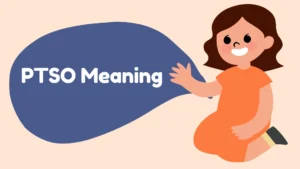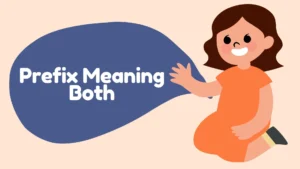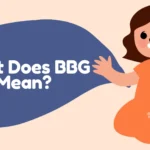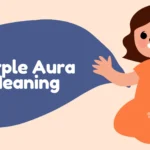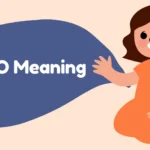The sunflower, with its radiant yellow petals and striking resemblance to the sun, has captivated human imagination for centuries. More than just a vibrant bloom in gardens or fields, the sunflower carries deep symbolic significance across cultures, history, and even personal expression. From ancient mythology to modern-day social media posts, the sunflower is a powerful symbol of happiness, hope, loyalty, and resilience. Whether given as a gift, used in artistic works, or admired in nature, the meaning behind the sunflower often extends far beyond its visual appeal.
Understanding the layered meanings of this iconic flower can enrich our appreciation of it and help us express feelings and ideas more deeply. In this article, we’ll explore what the sunflower truly represents, how its meaning has evolved, and how it is used in various contexts today.
What Does “Sunflower” Mean?
At its core, the sunflower symbolizes adoration, loyalty, and longevity. These meanings stem largely from the flower’s physical behavior: it turns its face toward the sun, a phenomenon known as heliotropism. This motion has led many to associate sunflowers with unwavering faith and positivity. The bold, open appearance of the sunflower also conveys warmth, vitality, and confidence.
In various cultures, the sunflower has been seen as a representation of truth and spiritual insight. In Chinese symbolism, sunflowers are linked to good luck and long life. Native American cultures viewed the sunflower as a source of nourishment and a spiritual guide due to its alignment with the sun.
Moreover, sunflowers are often used to express feelings of admiration and gratitude. Giving someone sunflowers can convey a heartfelt message of appreciation, making it a popular flower in both romantic and platonic gestures.
Whether in literature, art, or daily conversation, the sunflower holds its place as a symbol of joy, resilience, and enduring hope.
Other Ways to Say “Sunflower”
While “sunflower” is a specific term, there are various expressions and phrases that evoke its essence without using the word itself. Here are some examples:
- Helianthus – The scientific name for the sunflower, often used in botanical or poetic contexts.
- Golden bloom – A more poetic or literary way to refer to a sunflower.
- Sun-chaser – Descriptive of the flower’s heliotropic nature.
- Solar flower – A creative term inspired by its sun-like appearance and behavior.
- Sun’s mirror – Symbolic of the sunflower’s tendency to reflect sunlight.
These alternatives are especially useful in poetry, songwriting, or storytelling where repetition of the word “sunflower” might feel redundant or where metaphorical language is preferred.
Definitions & Meaning
The word “sunflower” derives from the Greek helios (sun) and anthos (flower). In the most literal sense, it refers to the tall, bright yellow flower that turns its face toward the sun. Botanically, it belongs to the genus Helianthus and is known for its large flower heads and seed-filled centers.
Symbolically, the sunflower is associated with:
- Positivity and Joy: Its bright color and sun-following habits make it a natural emblem of cheerfulness.
- Loyalty and Faithfulness: Its consistent orientation toward the sun reflects steadfastness.
- Vitality and Energy: The sunflower’s robust stature and vibrant color are linked to strength and dynamism.
- Hope and Renewal: Often used to represent new beginnings or recovery from hardship.
In dream interpretation, seeing a sunflower may represent optimism and spiritual growth. It can also signal a need to remain positive in the face of adversity.
Origins & History
Sunflowers are native to North America and were first domesticated over 4,000 years ago by indigenous peoples. Native American tribes not only cultivated sunflowers as a food source—valuing their seeds for oils and nourishment—but also revered them for spiritual and ceremonial purposes.
Spanish explorers brought sunflowers to Europe in the 16th century, where they became a beloved ornamental plant and later, a key agricultural crop. The sunflower’s unique ability to follow the sun intrigued early botanists and inspired countless artists and poets.
One of the most famous tributes to the sunflower comes from Vincent van Gogh, whose Sunflowers series of paintings immortalized the bloom as a symbol of artistic passion and emotional depth.
Over time, the sunflower’s role expanded beyond agriculture and aesthetics—it became a global symbol of positivity, peace, and social change. Today, it continues to carry cultural weight, especially in movements promoting environmental awareness and mental health.
Example
Consider a simple gesture: a friend gives you a bouquet of sunflowers after a tough week. Beyond their beauty, the flowers carry a message—stay strong, keep looking toward the light. It’s not just a floral arrangement; it’s a symbol of encouragement.
In literature, a character might be described as having a “sunflower soul”—someone who finds light in dark places or brings happiness to others.
On social media, emojis or sunflower photos often accompany posts celebrating growth, gratitude, or joy. For example: 🌻 “Choosing to shine, no matter the weather.”
These examples show how sunflowers are more than flowers—they’re meaningful tokens used to express emotion and connection.
Usage in Different Contexts
Social Media
On platforms like Instagram and TikTok, the sunflower emoji (🌻) often appears in captions about self-love, positivity, and mental health. Users adopt it as a symbol of personal growth and optimism.
Professional Settings
In branding and marketing, sunflowers are used to convey friendliness, eco-consciousness, and health. A wellness center or organic food brand might use sunflower imagery to communicate warmth and natural vitality.
Pop Culture
From Van Gogh’s paintings to Lana Del Rey’s lyrics and Post Malone’s hit song “Sunflower”, the flower has become a staple in art and music. It’s frequently used to symbolize romantic loyalty or the idea of standing tall despite adversity.
Ceremonial and Spiritual Use
Sunflowers are often included in wedding bouquets to symbolize long-lasting love and loyalty. In some cultures, they’re also used during spiritual ceremonies to signify alignment with higher powers or the universe.
Common Misunderstandings & Clarifications
Despite its positive connotations, there are a few misconceptions about sunflowers:
- Not always a sign of happiness: While commonly associated with joy, sunflowers can also symbolize longing or unfulfilled desire, especially in romantic contexts.
- Not native to all sunny climates: Sunflowers may evoke “tropical” imagery, but they are native to temperate regions and do best in well-drained soils with full sun.
- Not only decorative: Many people see sunflowers as purely ornamental, but they’re also vital in agriculture (for oil and seeds) and ecological systems (as pollinator attractants).
- The flower doesn’t follow the sun forever: While young sunflowers exhibit heliotropism, mature sunflowers generally face east permanently.
Understanding these nuances helps prevent overgeneralization and fosters a deeper appreciation of the flower’s role in various settings.
Alternatives & Synonyms
Looking for words or symbols similar to sunflower in meaning? Here are a few:
- Marigold – Another cheerful, sun-colored flower symbolizing passion and creativity.
- Daisy – Represents purity, innocence, and new beginnings.
- Sunshine – Used metaphorically to describe positivity and warmth.
- Light – Often symbolizes hope, guidance, and clarity.
- Radiance – Emphasizes brightness and joy.
These alternatives can be used depending on the emotional tone or symbolic message you want to convey.
Frequently Asked Questions (FAQ)
1. What does a sunflower symbolize in love? Sunflowers in love symbolize loyalty, adoration, and longevity in a relationship.
2. Why do sunflowers follow the sun? Young sunflowers exhibit heliotropism—tracking the sun’s path to optimize photosynthesis. Mature ones usually face east.
3. What cultures revere the sunflower? Native American unions, Chinese culture, and European societies all have symbolic associations with sunflowers, from spirituality to good fortune.
4. Are sunflowers used in funerals? Yes, they can be used to represent a life well-lived or a hopeful afterlife, though less common than lilies or roses.
5. What does it mean to dream about sunflowers? Dreaming of sunflowers often symbolizes happiness, clarity, or personal growth.
6. Can sunflowers be used to symbolize mental health? Absolutely. Sunflowers often appear in mental health awareness contexts as emblems of hope, resilience, and healing.
7. Is the sunflower used in political movements? Yes, it has been used in environmental and peace movements due to its association with sustainability and renewal.
Conclusion
The sunflower is far more than a bright, summery flower—it is a multifaceted symbol of joy, resilience, loyalty, and personal growth. Rooted in rich history and cultural meaning, its influence stretches across art, social media, and everyday life. Whether you’re giving sunflowers as a gift, using the emoji in a post, or simply enjoying their presence in a field, you’re tapping into a deep well of symbolism and emotion.
By understanding the true meaning behind the sunflower, we can connect more intentionally with the world and express ourselves in ways that are both beautiful and profound. Let your life, like the sunflower, turn toward the light.




